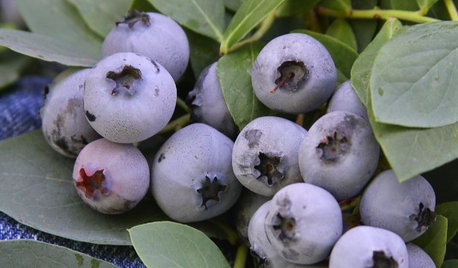Ruth Stout's gardening under straw: experiences
mensplace
14 years ago
Related Stories

GREEN BUILDINGWhy You Might Want to Build a House of Straw
Straw bales are cheap, easy to find and DIY-friendly. Get the basics on building with this renewable, ecofriendly material
Full Story
WINTER GARDENINGPruning Secrets for Exquisite Roses
Encourage gorgeous blooms year after year with this time-tested advice on how to prune your rosebush in winter for health and shape
Full Story
GARDENING GUIDESLessons in the Rewards of Selfless Gardening
Let go of gardening for your own vision and watch the garden’s own true vision come forth
Full Story
EDIBLE GARDENSHow to Grow Your Own Sweet Summer Crops
This guide will help any gardener get started on growing the freshest warm-season veggies and berries for summer
Full Story
FALL GARDENINGBe Your Own Wildflower Nursery
Gather seeds from your garden in fall, and you'll have a selection of plants for next year — without spending a dime
Full Story
SPRING GARDENINGSummer Crops: How to Grow Strawberries
Pluck your own sweet strawberries right from the garden vine for smoothies, salads or eating then and there
Full Story
GARDENING GUIDES15 Favorites for Your Summer Edible Garden
Get your summer garden off to a good start with these popular fruits and vegetables
Full Story
GREAT HOME PROJECTSHow to Replace Your Lawn With a Garden
New project for a new year: Lose the turfgrass for energy savings, wildlife friendliness and lower maintenance
Full Story
GROUND COVERSGround Force: 10 Top Ground Covers for Your Garden
Protect your soil from weeds and drought this summer with a living mulch of ground covers
Full Story
FARM YOUR YARDHow to Grow Vegetables in Containers
Get glorious vegetables and fruits on your patio with a pro’s guidance — including his personal recipe for potting mix
Full Story





diggity_ma
digdirt2
Related Professionals
Simpsonville Landscape Architects & Landscape Designers · Wrentham Landscape Architects & Landscape Designers · Benbrook Landscape Architects & Landscape Designers · Brentwood Landscape Architects & Landscape Designers · Folsom Landscape Architects & Landscape Designers · Signal Hill Landscape Architects & Landscape Designers · Goodyear Landscape Contractors · Camp Verde Landscape Contractors · Eagle Landscape Contractors · Fort Wayne Landscape Contractors · Middle River Landscape Contractors · Pahrump Landscape Contractors · Streamwood Landscape Contractors · Des Plaines Driveway Installation & Maintenance · East Providence Driveway Installation & Maintenancelaceyvail 6A, WV
mensplaceOriginal Author
knittlin
digdirt2
sfallen2002
pagardner
idaho_gardener
wayne_5 zone 6a Central Indiana
pagardner
kayhh